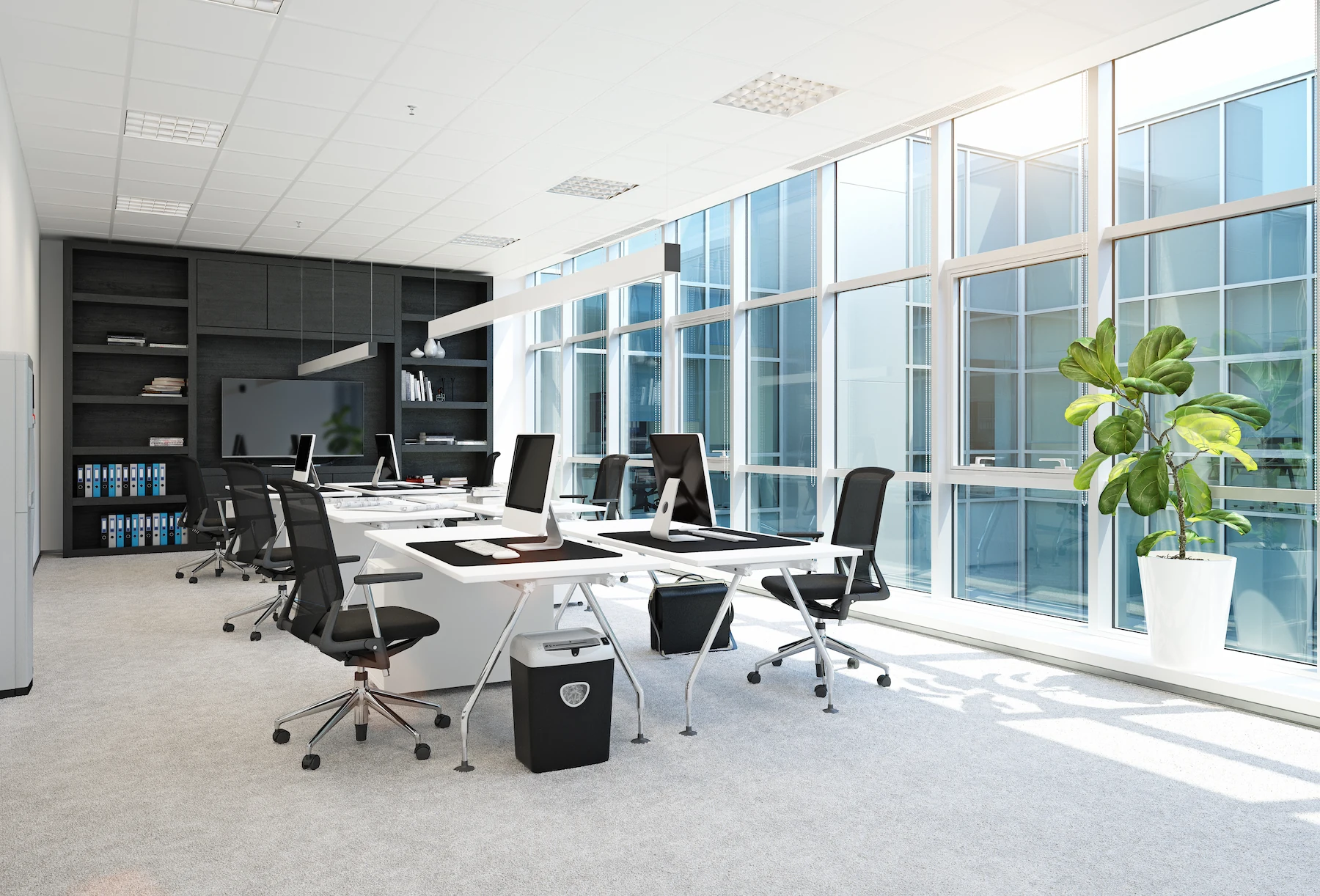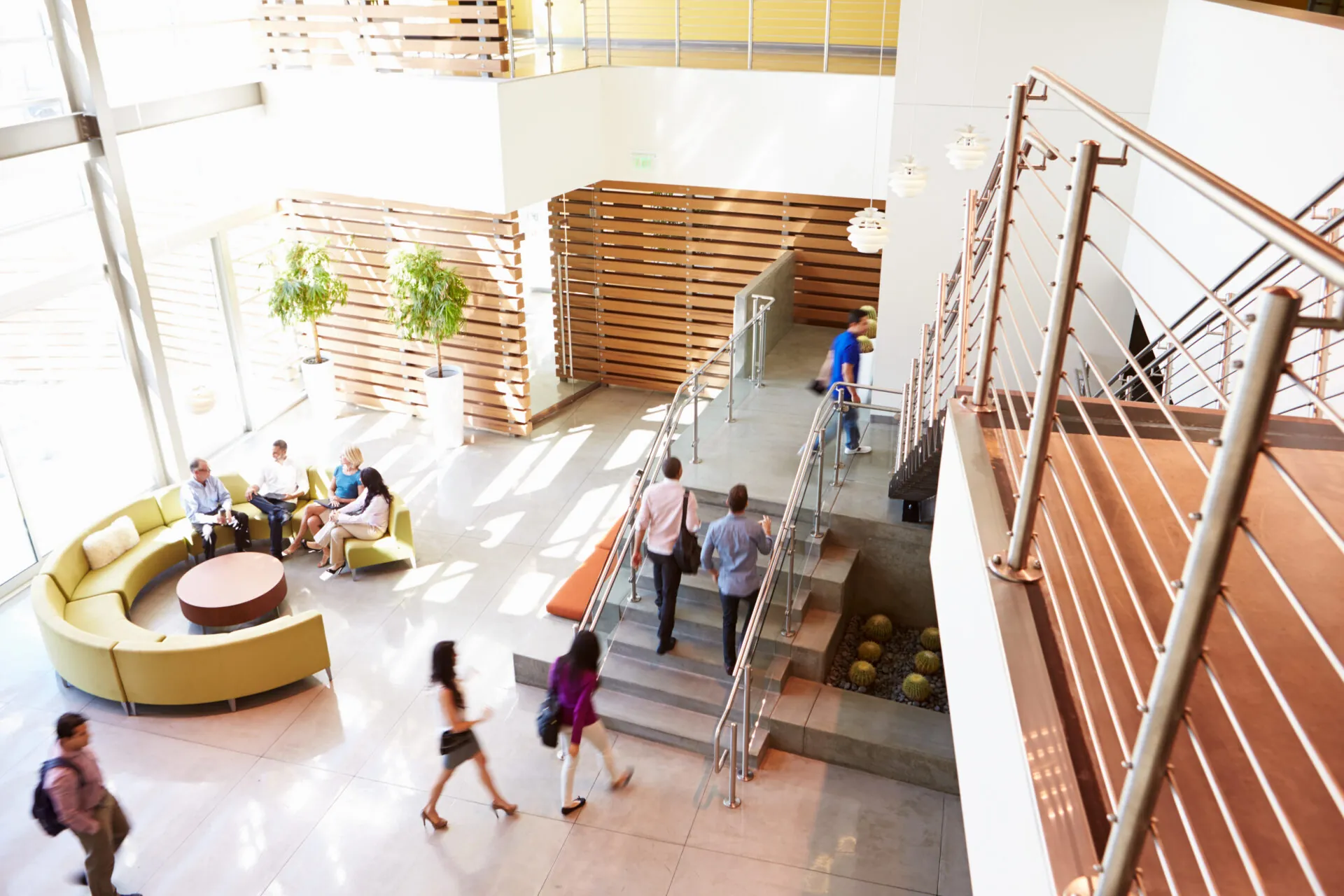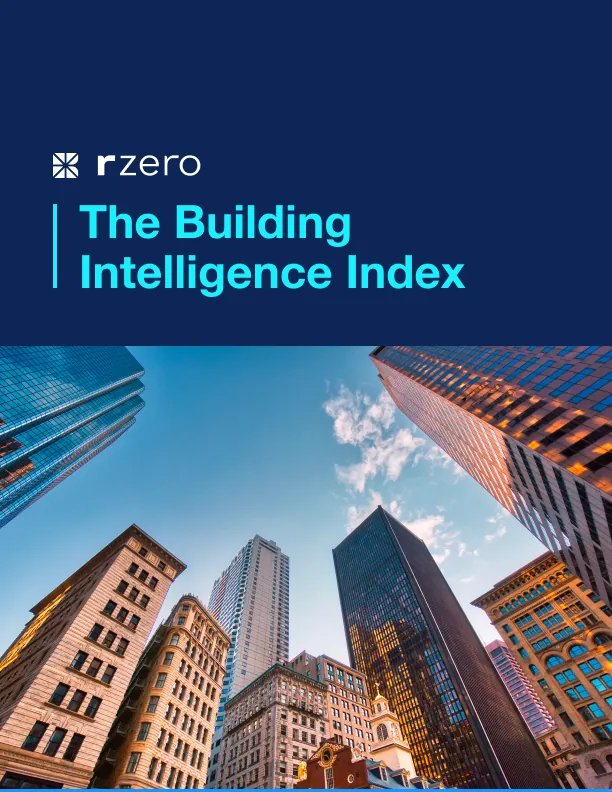
3 Strategies to Cut Energy and Operating Costs
If you missed R-Zero’s recent webinar on strategies to cut down on energy and operating costs, here’s a quick recap that covers our three main strategies for measuring, optimizing, and restructuring your building for maximum savings.
Energy Usage in Buildings
Commercial buildings spend a significant amount of money on energy, but the usage depends on the size and purpose of the building. For example, US office spaces spend about $27 billion a year on energy, and inpatient hospitals spend about $7 billion. It may seem like hospitals are saving money, but their energy intensity, which is the amount of energy they use per square foot, is actually three times higher than office spaces.
Hospitals are one of the most energy-intensive buildings in terms of energy needs per square foot. Offices, on the other hand, spend only $1.63 on energy per square foot.
Buildings like offices, nursing homes, inpatient healthcare, and schools use about 60-75% of their energy for HVAC and lighting, and here is where we can find opportunities to save on energy and operating costs.
The Three Strategies for Cutting Costs
The rising costs of building operation are primarily due to the rising cost of energy, the rising cost of HVAC systems and labor, and the rising demand for higher indoor air quality.
Here are three strategies for addressing these rising costs and reaching achievable energy savings without major construction.
1. Know What’s Going on in Your SpaceTo understand your space, there are four main pillars of measurement you need to know: occupancy, indoor air quality, energy, and health.
Knowing each of these metrics allows you to find gaps in your building operations and address them in step two, but first, you need to take accurate measurements. Measuring technology with thermal or radar capabilities can allow you to count the number of people in a space, measure occupancy patterns, and find other useful data.
You can calculate your energy usage based on your building’s utility cost and the percentages of lighting and ventilation to figure out how much is going to each system.
2. Optimize the Space and Workflows You Already HaveOnce you have the necessary data, you can use it to plan and actively manage your space. If you have a room that’s only occupied a few times a week, you can adjust the cleaning schedule to reflect that use.
You may also find that you have more space than you think. If your occupants feel that your building lacks space, but you discover that you have certain spaces that go unused every day, you can reconfigure your building layout to make the most of the space you have for occupant comfort.
3. Match Your Core Building Systems to the Needs of OccupantsOnce you know your space and have optimized your workflows, you can address the building itself to help it meet the needs of its occupants more precisely.
In terms of air quality optimization, if you measure indoor air quality (IAQ) and you have a system that can dynamically respond to the IAQ in a given zone, you can connect the measurements and the system. For example, if you have a few people in a space that is exceeding IAQ standards, you can lower ventilation and reduce energy consumption.
4. Final Bonus Step: Investing in Larger Construction ProjectsIf you’ve done all of the previous steps, then you can start to consider whether investing in a bigger project is right for you.
Before choosing a construction project, there are two major considerations to take into account:
What projects deliver the highest savings at the lowest cost?
Most people think that the big projects they need to undertake are HVAC and lighting retrofits, which have potentially big savings, but at an extremely high cost. Why would you do these projects before pursuing lower-cost options that can deliver high savings? If you haven’t pursued the suggestions listed above in steps 1-3, we recommend that you start with those low-cost options before pursuing major structural change.
What long-term plans does your building have?
If you’re considering a project that will only pay off in 2-3 years, you face the risk of reaching that point 2-3 years down the line with a building that has changed operational needs. If it’s possible you may move to a new building, you may want to reconsider a big building retrofit.
You should also consider that there are current major investments going into improving HVAC, heating, and disinfection systems. Those systems are getting better at a faster rate than previously, and the system that you can buy in 2-5 years is going to be dramatically better than the one that is available today. There is a risk of buying a less effective system in the long term if you choose not to wait for the next generation of systems.
Partner with R-Zero to Optimize Your Space
R-Zero’s mission is to help your building look at the challenge of energy savings from a holistic angle. We want to help you address occupancy, energy, health, and indoor air quality through high-quality products that help your building achieve healthy and efficient operation.
Contact us today to start a conversation about how R-Zero can help you work through the 3 major steps for saving on energy costs.
More posts you might like
-

3 Key Takeaways from AHR Expo 2025: What’s Shaping the Future of HVAC
The 2025 AHR Expo brought together HVAC industry leaders, innovators, and professionals to showcase the latest advancements in heating, ventilation, and air conditioning. Here are the key insights that stood out from our team on the ground. 1. Smart Technology is Enhancing, Not Replacing, Traditional HVAC A significant shift observed at this year’s expo is […]
-

Webinar Recap: Redefining Energy Efficiency
As commercial energy costs continue to rise, building operators are looking for faster, cost-effective solutions to reduce waste and improve efficiency. Heating, Ventilation, and Air Conditioning (HVAC) systems account for nearly 60-70% of total building energy consumption, making them one of the largest opportunities for savings. However, traditional HVAC systems often operate on outdated schedules, […]
-

Wildfire Smoke: Understanding the Impact on Indoor Air Quality
As we face yet another intense wildfire season, with significant events already impacting regions across the country, the challenges to air quality, both outdoors and indoors, are more pressing than ever. Wildfires contribute up to 50% of “ultrafine” particles in the air; tiny pollutants that can travel hundreds of miles and infiltrate indoor spaces, affecting […]

